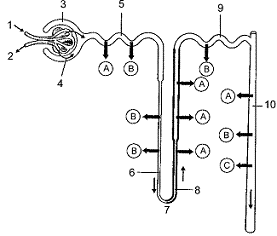A tumor that has gained the ability to spread throughout the body, generally with life-threatening consequences, is known as a _____ tumor.
a. benign
b. polyp
c. malignant
d. growth-promoting
Answer: c. malignant
You might also like to view...
To better understand the genetic basis of human diseases, would it be better to sequence 1000 human genomes or 1000
genomes of closely related species?
a. 1000 genomes of closely related species, because animals exhibit disease symptoms more clearly than humans do b. 1000 genomes of closely related species, because it is easier to sequence animal genomes than human genomes c. 1000 human genomes, because this would give a better indication of the evolutionary history of diseasecausing genes d. 1000 human genomes, because this would give a better indication of the link between specific human genes and genetic disorders e. neither would be beneficial because human disease is almost entirely caused by environmental factors
Species richness refers specifically to
a. the numbers of individuals of each species present. b. the ability of larger animals to enrich themselves by successfully preying on smaller ones. c. the number of different species in the habitat. d. the feeding levels at which the animals are located. e. none of these.
Refer to the accompanying figure. Secretion of potassium and ammonium ions occurs mainly in the portion labeled as:

a. 2.
b. 5.
c. 7.
d. 9.
e. 10.
Which one of the following terms applies to the phylum Cnidaria?
A. Pseudocoelomate B. Radial symmetry C. Triploblastic D. Parazoa E. Protostome